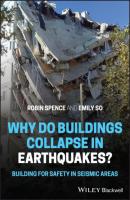Why do buildings collapse in earthquakes? Building for safety in seismic areas. Robin Spence
Чтение книги онлайн.

Читать онлайн книгу Why do buildings collapse in earthquakes? Building for safety in seismic areas - Robin Spence страница 12
Название: Why do buildings collapse in earthquakes? Building for safety in seismic areas
Автор: Robin Spence
Издательство: John Wiley & Sons Limited
Жанр: Отраслевые издания
isbn: 9781119619468
isbn:
Income groups are from World Bank data (High, H; Upper‐middle, UM; Lower‐middle, LM; Low, L). See also Table 2.2. Dates are given in DDMMYYYY format. Some casualty and loss data are amended based on more recent estimates (Pomonis 2020).
a Events with significant tsunami impacts are shown.
Load‐bearing masonry is the predominant way of building throughout the affected area, but methods have changed over time. The most common masonry technique is a single‐storey house with walls of random rubble stone masonry set in a mud mortar, with a clay tile roof: these buildings are found everywhere, both in the main towns and in the villages (Figure 2.1). More substantial dwellings use dressed or semi‐dressed stone or sometimes clay brick walls; these are commonly two‐storey buildings. In recent years, the use of reinforced concrete (RC) slabs for floors and roofs, with coursed masonry walls, has become common in the wealthier parts of Kutch (Figure 2.2). The main towns have also significant numbers of multistorey apartment blocks in RC (Figure 2.3). None of these forms of building were spared by the intense and widespread ground shaking.
The major city of Gandhidham, and four large towns Bhuj, Anjar, Bhachau and Rapar, all in the Kutch district, were devastated, as was every village within a wide area. Over 230 000 one‐ and two‐storey masonry buildings and several hundred concrete frame buildings collapsed. However, as pointed out by Sudhir Jain (2016), the collapse rate of buildings in the zone of highest intensity was much lower in this earthquake than in the 1993 Mw6.2 Latur earthquake in India's Maharashtra province where rubble stone walls with heavy mud roof are typical.
In Ahmedabad, about 200 km from the epicentre, severe shaking was experienced and over 100 multistorey RC frame buildings collapsed. A survey of damaged buildings in Bhuj and neighbouring villages by EEFIT (2005), including the author's team, showed that the rubble masonry buildings performed worst (over 30% collapse rate) while masonry with RC slabs and RC frame apartment buildings performed better (7 and 3% collapse rates). The collapse of buildings in Ahmedabad, all of which were of multistorey RC frames, can be attributed to amplification of the ground motion through the deep alluvial deposits on which Ahmedabad stands, coupled with poor design and construction – soft‐storey apartment blocks were common. The Indian earthquake design code in use at the time is well‐written and comprehensive, but it was not binding on private builders, and was largely ignored (see Chapter 8).
Figure 2.1 Stone masonry building in the Kutch district damaged in the Bhuj earthquake.